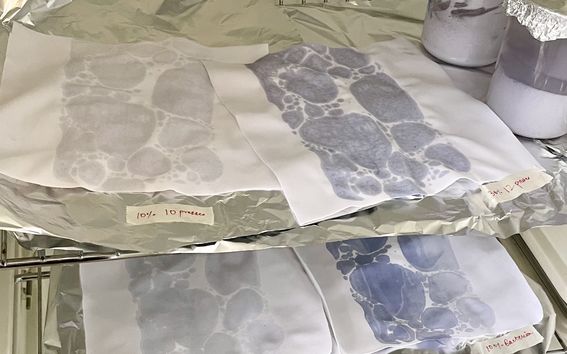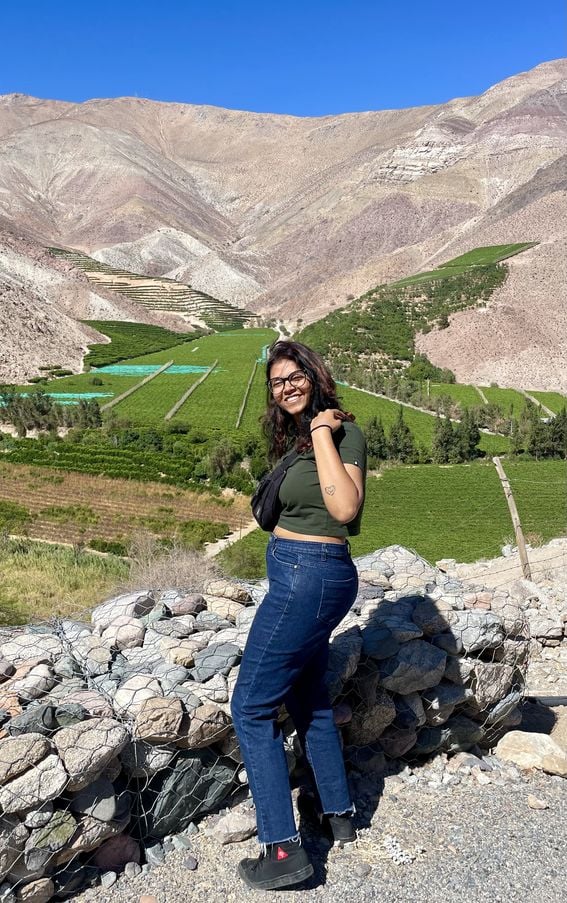Pragati Singhal - A Look Into Sustainability From Another Part of the World


Creative Sustainability student Pragati Singhal shares her experience of an international internship project in Chile.
Tell a little bit about yourself: What is your background?
My name is Pragati Singhal, I am a second year CS student from design track. I studied textile design in India with a strong focus on craft and textile communities - that led me to developing an interest towards design research and sustainability from a grassroots perspective. At Aalto I focus my research on decolonial design and design culture for sustainability via systems thinking.
How has your journey in Creative Sustainability been so far?
So far, being a part of the CS community and combining my interest to explore different areas, along with a theoretical and empirical knowledge pertaining to sustainability has been both a rewarding and challenging experience. I took a lot of courses and projects that were out of my comfort zone - that gave me an opportunity to explore domains which were not directly related to my field or area of research. Trying to make space for diverse and often conflicting perspectives while studying a program which focuses on the broad understanding of sustainability has been a challenging feat especially when it comes to decoding the wicked aspects of the field.
What did you do in Chile? How did it go?
In Chile I worked on an internship project where I was developing bacterial dyes for the sportswear industry using the locally found bacteria in the northern region of Chile. This internship was a collaboration between Aalto University and Pontifica Universidad Católica de Chile under the topic of smart wearables. Through the project, I researched different methods to optimise the colour saturation from the bacterial pigment and make it more viable for ready to wear use fabrics, specifically Nylon. It was a refreshing experience, especially being in a new country with new people and culture that led to a lot of cross-pollination of ideas.
What did you learn during the internship?
I was mostly curious and excited again to work in a lab, a space I really enjoy, and it also provided me the opportunity to learn about new developments in the field of smart wearables with respect to colour and sustainability. This project was an exciting area for me to explore, since I have had some experience working with biomaterials during my bachelor's. Combining it with my experience of studying in CS provided some interesting insights not just about the project but also the structure and understanding of technical interventions such as this, within a short period.
Did you encounter any struggles and how did you overcome them? How did the internship work with the CS programme? Can you highlight some relevant sustainability concepts?
One of the challenges during the internship was to combine the knowledge gained during the course of studying in the CS with the project that was diametrically opposite to my current field of research - my background in textile was especially helpful in bridging the gap between them. Forecasting the impact of such technical projects with respect to the future of sustainability, in terms of both benefits and repercussions, helped in providing me a pathway to channel the takeaways of the internship. My biggest insight which also overlapped with my takeaway from the CS programme was reaffirming the concept of pluriversality of ideas and innovations and how more contextual interventions can prove helpful in solving or mitigating certain problems with our current industry model - the textile industry in this case. Since we were working with bacterial dyes, they also posed a great possibility of being used in medical textiles. Hence, collaborating across and between industries, and thinking about the systems in which the research from one field could benefit the other was another overlapping element that became more relevant to me after having experienced sustainability topics in a more practical manner.
What is your one tip for students looking for international internships?
I can absolutely recommend taking up at least one international project during your studies as it really allows you to see and soak in the thinking culture of a new place. These experiences can contribute towards a broader understanding of how the same problems are present across different domains and cultures. It also gives an understanding of different thought processes and work ethics which in general provides in depth insights into how systems are built in different parts of the world, which is something being a CS student is extremely valuable.